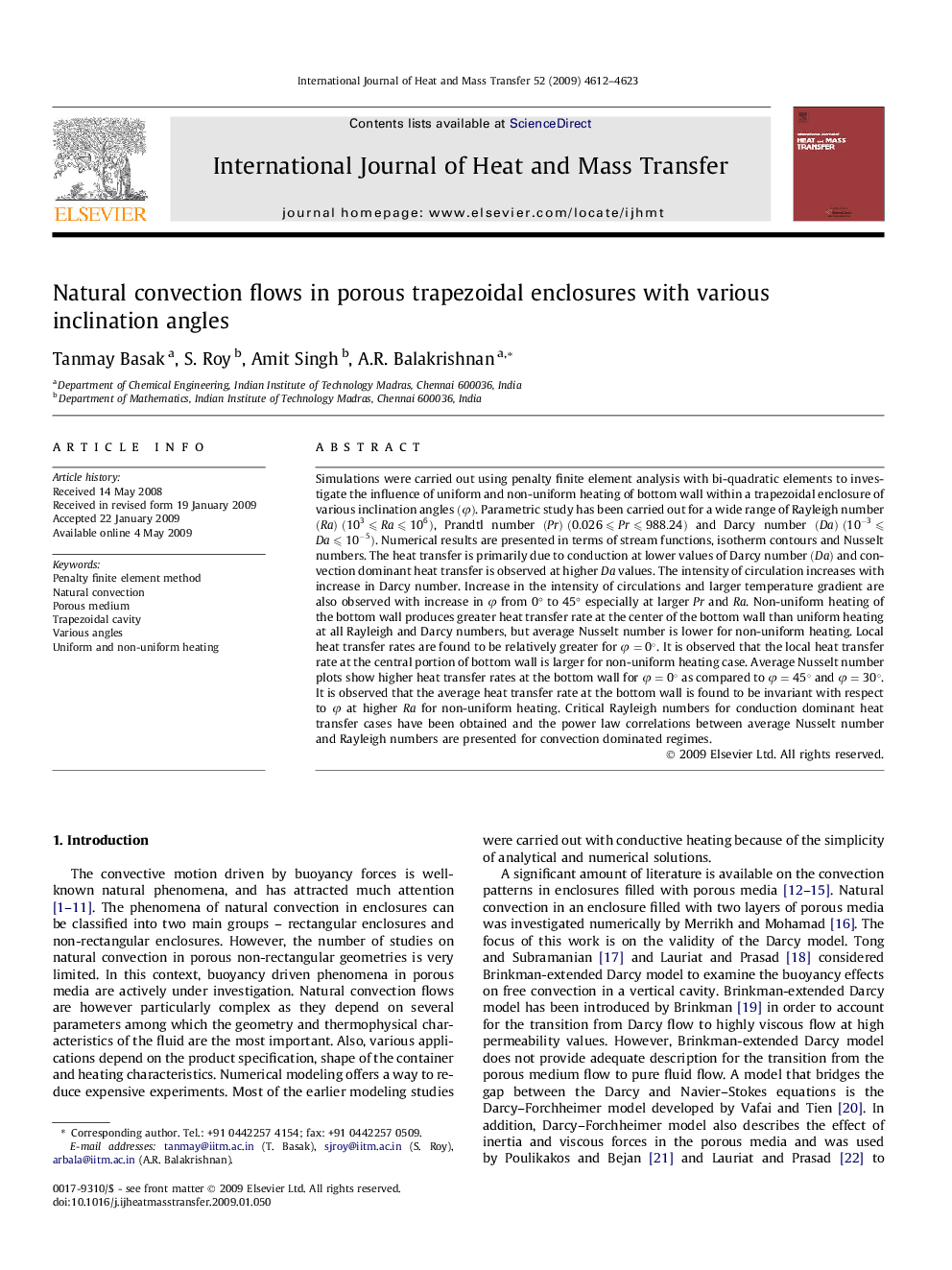| Article ID | Journal | Published Year | Pages | File Type |
|---|---|---|---|---|
| 661803 | International Journal of Heat and Mass Transfer | 2009 | 12 Pages |
Simulations were carried out using penalty finite element analysis with bi-quadratic elements to investigate the influence of uniform and non-uniform heating of bottom wall within a trapezoidal enclosure of various inclination angles (φ)(φ). Parametric study has been carried out for a wide range of Rayleigh number (Ra)(103⩽Ra⩽106), Prandtl number (Pr)(0.026⩽Pr⩽988.24) and Darcy number (Da)(10-3⩽Da⩽10-5). Numerical results are presented in terms of stream functions, isotherm contours and Nusselt numbers. The heat transfer is primarily due to conduction at lower values of Darcy number (Da)(Da) and convection dominant heat transfer is observed at higher Da values. The intensity of circulation increases with increase in Darcy number. Increase in the intensity of circulations and larger temperature gradient are also observed with increase in φφ from 0° to 45° especially at larger Pr and Ra . Non-uniform heating of the bottom wall produces greater heat transfer rate at the center of the bottom wall than uniform heating at all Rayleigh and Darcy numbers, but average Nusselt number is lower for non-uniform heating. Local heat transfer rates are found to be relatively greater for φ=0°φ=0°. It is observed that the local heat transfer rate at the central portion of bottom wall is larger for non-uniform heating case. Average Nusselt number plots show higher heat transfer rates at the bottom wall for φ=0°φ=0° as compared to φ=45°φ=45° and φ=30°φ=30°. It is observed that the average heat transfer rate at the bottom wall is found to be invariant with respect to φφ at higher Ra for non-uniform heating. Critical Rayleigh numbers for conduction dominant heat transfer cases have been obtained and the power law correlations between average Nusselt number and Rayleigh numbers are presented for convection dominated regimes.
